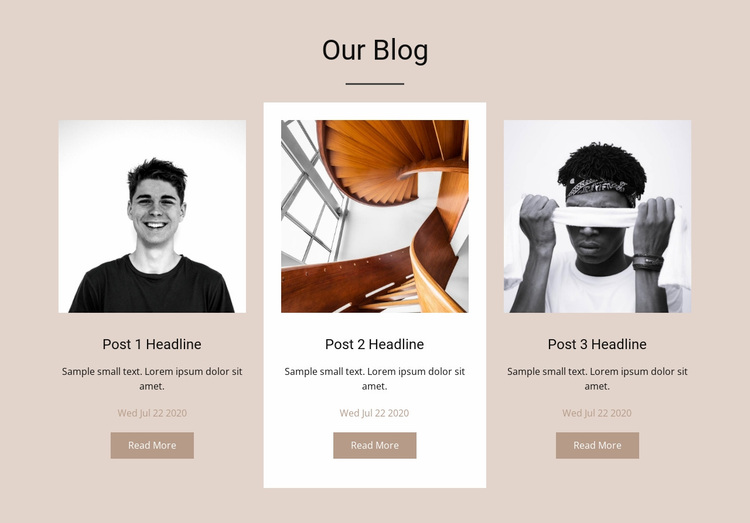Innovative Website Design Services with a Focus on Navigation
Innovative Website Design Services with a Focus on Navigation
Blog Article
Top Tips for Producing an Impactful Site Design That Converts
To attain this, one have to take into consideration a variety of elements, consisting of comprehending the target audience, focusing on customer experience, and enhancing for mobile systems. The critical use of engaging call-to-actions and a well-defined aesthetic power structure plays a crucial function in leading individuals through their trip.

Understand Your Target Audience
Understanding your target market is basic to reliable site design, as it prepares for creating an interesting individual experience. Identifying that your users are, including their demographics, choices, and habits, allows designers to tailor the site's content, layout, and performance to fulfill certain demands.
Carrying out detailed marketing research is critical in this process. Studies, interviews, and analytics can provide important insights right into user assumptions and pain factors. By compiling this data, developers can produce customer personalities that represent different sections of the target market, ensuring that style decisions are notified and pertinent.
Furthermore, recognizing the target audience aids in selecting suitable design aspects such as color pattern, typography, and images that resonate with customers. A website that speaks straight to its target market promotes a feeling of link and trust, encouraging longer visits and higher conversion rates.
Inevitably, a user-centered technique to site style not just boosts customer fulfillment yet also supports service purposes by driving involvement and loyalty. By focusing on the needs and preferences of the target audience, a web site can successfully offer its function and attain wanted results.
Prioritize Individual Experience
To improve the general performance of a web site, prioritizing customer experience (UX) is essential (Website Design). A properly designed UX makes sure that site visitors can navigate the site effortlessly, locate details promptly, and engage with content meaningfully. This results in enhanced customer fulfillment and greater conversion rates
Begin by executing user-friendly navigation. Menus must be rationally structured, enabling individuals to situate essential areas of the website with marginal initiative. Consistency in design components, such as color pattern and typefaces, cultivates knowledge, which is critical for preserving user interaction.
Additionally, consider the filling speed of your site. A delay of simply a few secs can lead to substantial drop-offs, as individuals are less most likely to wait for a slow-loading page. Simplifying pictures and optimizing code can enhance performance and preserve visitors.
By focusing on customer experience, you not just develop a much more delightful environment for visitors however also reinforce your brand name's reliability. Eventually, a focus on UX is an investment in the long-term success of your site.
Enhance for Mobile Tools
Optimizing for mobile phones is important in today's digital landscape, where a boosting variety of users gain access to web sites with mobile phones and tablet computers. A mobile-friendly design not only enhances user experience but additionally plays a substantial duty in boosting online search engine rankings. To attain this, it is vital to adopt a responsive layout that instantly adapts to different screen dimensions and orientations.

Loading rate is one more vital aspect; mobile customers are usually much less client and expect rapid accessibility to information. Optimize images and take advantage of browser caching to enhance performance. Test your web site on numerous tools and screen resolutions to identify and fix any kind of prospective usability issues. By focusing on mobile optimization, you make sure that your internet site stays affordable and efficiently involves a more comprehensive target market.
Use Engaging Call-to-Actions
An internet site's effectiveness commonly depends upon its capability to lead visitors toward preferred activities, making compelling call-to-actions (CTAs) crucial components of design. CTAs my website serve as the pivotal points that guide individuals to involve with the site, whether that suggests buying, signing up for an e-newsletter, or downloading a resource.
To produce efficient CTAs, clearness is extremely important. Usage succinct language that clearly communicates the action you want the individual to take. Phrases such as "Begin," "Sign Up Free," or "Shop Now" not only share urgency but also eliminate obscurity. The placement of CTAs is similarly essential; they ought to be tactically positioned throughout the page to guarantee they are conveniently noticeable, particularly in high-traffic locations.
In addition, think about using directional hints, such as arrows or images, to lead customers toward these buttons. By concentrating on these elements, organizations can substantially boost customer interaction, driving conversions and inevitably accomplishing their website's objectives.
Concentrate On Visual Hierarchy
Reliable site layout depends heavily on a well-structured visual power structure that overviews users through material seamlessly. By arranging elements in a fashion that focuses on info, developers can improve individual experience and facilitate decision-making. This includes making use of dimension, shade, comparison, and spacing strategically to accentuate one of the most vital parts of a website.
The usage of bigger typefaces for headings and subheadings develops a clear difference in between various sections, permitting users to scan material effortlessly. In addition, employing different colors for buttons and calls-to-action can record customer attention and motivate interaction. Whitespace is one more important part; it protects against mess and allows individuals to concentrate on essential messages without disturbances.
Pictures and graphics ought to enhance the text while likewise adhering to the well established hierarchy, reinforcing the overall message (Website Design). Consistency in layout aspects, such as color pattern and typography, further strengthens the visual power structure, making navigating user-friendly
Conclusion
To conclude, effective internet site style requires a detailed understanding of the target audience, prioritization of individual experience, and mobile optimization. The tactical use engaging call-to-actions and a distinct aesthetic pecking order even more enhances individual engagement. By implementing these concepts, internet sites can accomplish higher conversion prices, making certain that layout aspects not only draw in visitors yet additionally assist in seamless navigating and interaction. Inevitably, a well-executed web site style acts as a crucial part in driving user activities and accomplishing company purposes.
Report this page